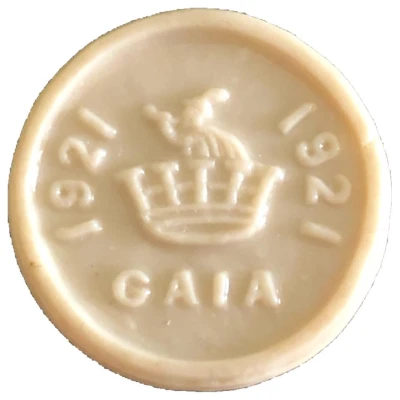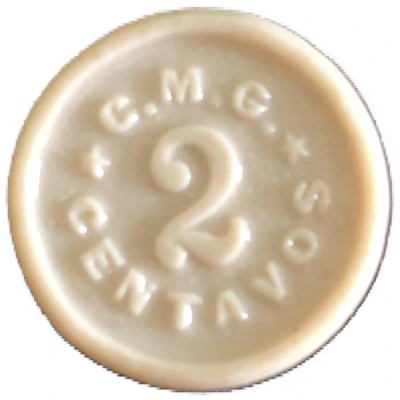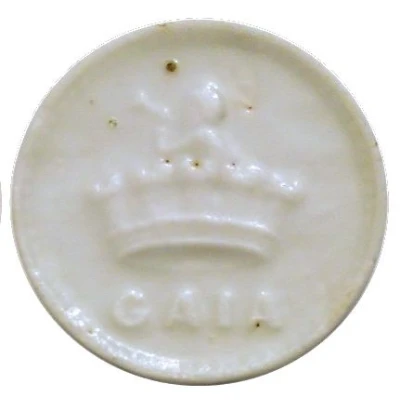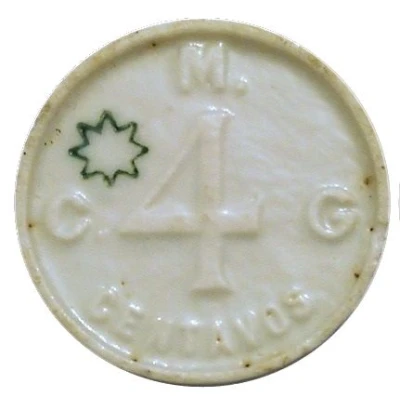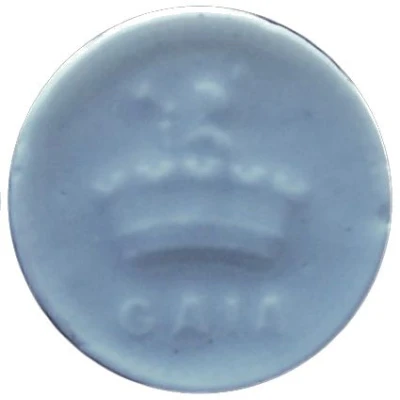
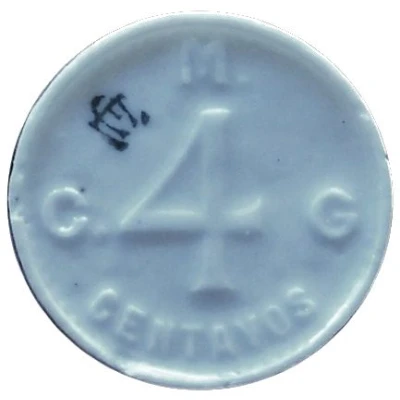

© zelito
4 Centavos (EC) ND
| Porcelain (white) | 3.55 g | 24.12 mm |
| Issuer | Portuguese notgeld (Portugal) |
|---|---|
| Period | First Republic (1910-1926) |
| Type | Token |
| Value | 4 Centavos (0.04 PTE) |
| Currency | Escudo (1911-2001) |
| Composition | Porcelain (white) |
| Weight | 3.55 g |
| Diameter | 24.12 mm |
| Thickness | 4.05 mm |
| Shape | Round |
| Orientation | Coin alignment ↑↓ |
| Demonetized | Yes |
| Updated | 2024-10-07 |
| Numista | N#298563 |
|---|---|
| Rarity index | 97% |
Reverse
Value in the center, monetary unit below, issuing entity abbreviation C.M.G at 9, 12 and 3 hours, EC stamp (Electro Cerâmica).
Script: Latin
Lettering:
C.M.G
4
centavos
Comment
Following World War I, the shortage of metal led the City Council of Gaia to have these emergency coins made, which, like banknotes, made up for the lack of change. The coins were made at Empresa Electro Cerâmica, SARL, later acquired by Vista Alegre.At least 4 series are known, with the same set of values. The first two series are similar, both from 1921, and only distinguishable by their finishing: in the first, the ceramic took a more accentuated firing, which caused the porcelain to become more glazed. The following series are undated, although produced in the same period, have a larger diameter and show a star-shaped mark or an EC (most common on the 4 cent coin). There are also versions of 1c. and 2c. with or without the period at the end of C.M.G. and also vertical and horizontal axes.
Interesting fact
One interesting fact about the Token 4 Centavos (EC) ND from Portuguese notgeld (Portugal) made of Porcelain (white) weighing 3.55 g is that it was used as a form of emergency currency during World War I. The Portuguese government issued these coins in 1914, when the country was facing a severe shortage of metallic coins due to the war effort. The coins were made of porcelain, a material that was readily available and inexpensive at the time, and were designed to be used as a temporary substitute for traditional metal coins. Despite their humble origins, these coins have become highly sought after by collectors today due to their unique history and rarity.
